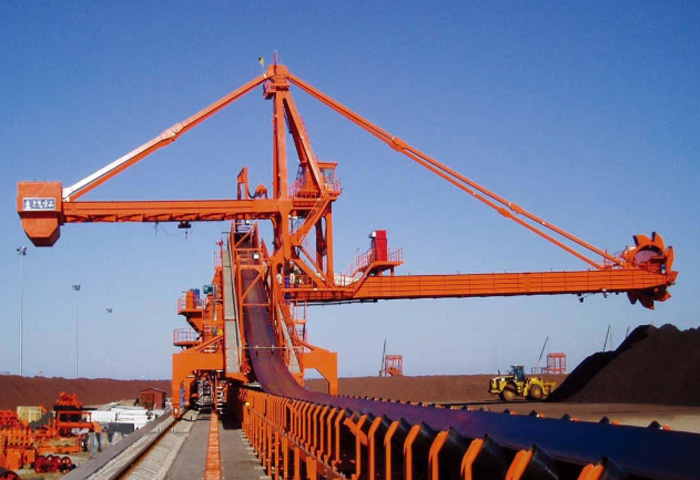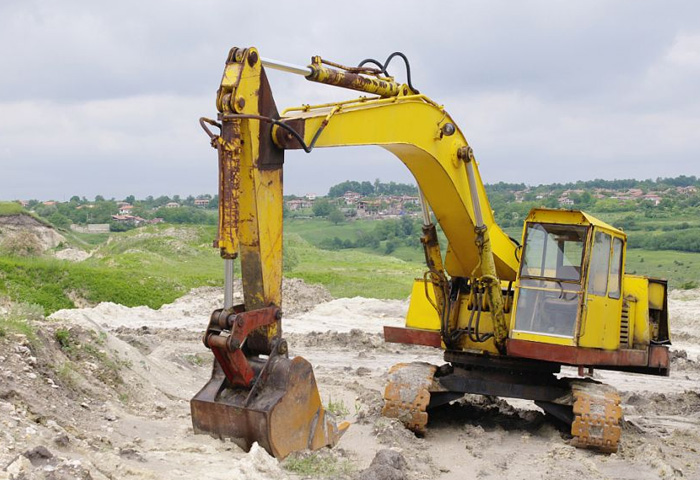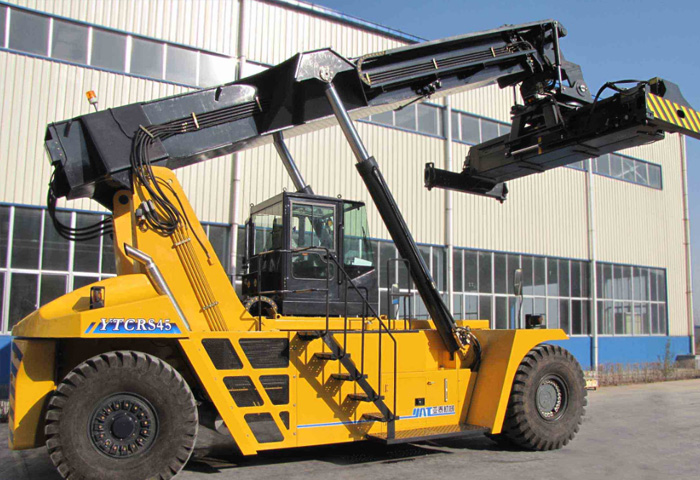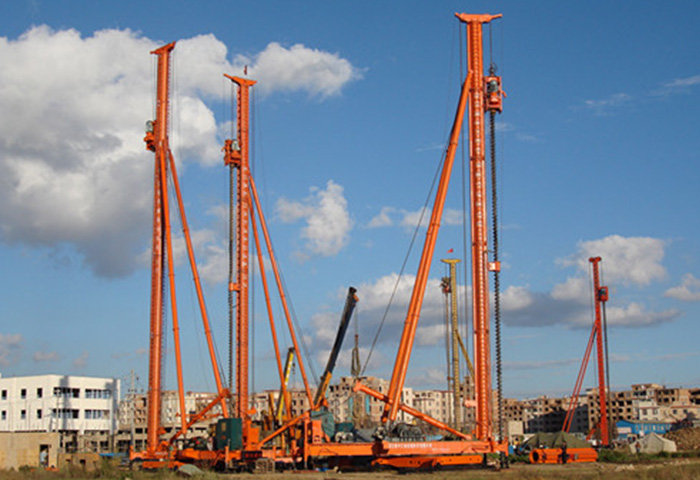
Agricultural Slewing Rings: The Essential Guide to Turntable Bearings for Farm Machinery
2025-03-25
This article provides a comprehensive overview of agricultural slewing rings, also known as turntable bearings, used in various types of farm machinery. We delve into their functionality, types, benefits, and key considerations for purchasing, aiming to offer valuable insights for equipment manufacturers and procurement professionals. This guide is worth reading because it combines expert technical knowledge with practical buying advice, bridging the gap between engineering specifications and real-world application needs, particularly for those sourcing from international markets like China.
What are Agricultural Slewing Rings?
Slewing rings, sometimes called slew rings or turntable bearings, are essential components in many types of agricultural machinery. They provide rotational movement between two structures, supporting heavy axial, radial, and moment loads. Think of the rotating base of a crane or the mechanism that allows an excavator’s cab to swivel. In agriculture, these bearings are crucial for equipment like harvesters, sprayers, and trailers, enabling smooth and controlled rotation.
The basic construction of a slewing bearing includes an inner ring, an outer ring, and rolling elements (balls or rollers) in between. One or both rings often incorporate a gear (internal or external) to facilitate driven rotation via a slew drive or other power transmission system. The design and materials used are specifically chosen to withstand the demanding conditions of agricultural environments, including heavy loads, dirt, debris, and varying weather.
Why are Slewing Bearings Crucial for Agricultural Machinery?
Agricultural machinery operates under strenuous conditions, requiring robust and reliable components. Slewing bearings play a pivotal role by providing:
- High Load Capacity: They support significant weight and forces, ensuring equipment stability and safety during operation. Farming machines often handle very heavy materials.
- Smooth Rotation: Low friction and precise engineering allow for effortless and controlled turning, enhancing operational efficiency.
- Durability: Built to withstand harsh environments, including exposure to dust, moisture, and fluctuating temperatures, typical in agriculture. Agricultural slewing requires great durablility.
- Compact Design: Offer a compact solution compared to other rotational systems.
What are the Different Types of Slewing Bearings Used in Agriculture?
Several types of slewing bearings are commonly used in agricultural applications, each with its specific advantages:
- Single-Row Ball Slewing Bearings: These are a cost-effective solution for lighter-duty applications. They feature a single row of balls running in a raceway.
- Single-Row Roller Slewing Bearings: Suitable for higher load capacities and greater stiffness. Rollers provide a larger contact area, distributing the load more effectively.
- Double-Row Ball Slewing Bearings: Offer increased load capacity and tilting moment resistance compared to single-row ball bearings.
- Three-Row Roller Slewing Bearings: Designed for the most demanding applications, providing the highest load capacity and rigidity. These use three independent rows of rollers.
- Cross Roller Slewing Bearings: This type offers high rigidity and running accuracy in a compact design. It’s ideal for applications where space is limited, but high performance is needed.
- Light Type & Flange Slewing Ring Bearings: A convenient solution for specific applications, offering easy installation and a compact profile.

How to Choose the Right Slewing Bearing Supplier?
Finding a reliable supplier is crucial for ensuring the product quality and long-term performance of your agricultural equipment. Consider the following:
- Experience and Reputation: Look for manufacturers with a proven track record in the slewing bearing industry, like Xinda.
- Manufacturing Capabilities: Assess their production facilities, technology, and quality control processes. Xinda, for example, boasts multiple production lines.
- Technical Support: Ensure they offer comprehensive technical assistance, including design support and application engineering.
- Certifications: Verify that they comply with relevant international standards, such as ISO certifications.
Xinda Slewing Bearing in China, represented by Allen, specializes in the design and manufacture of slewing ring bearings, serving customers in the USA, North America, Europe, and Australia. They offer a wide range of bearing types and have extensive experience in the B2B market.
What are the Key Considerations When Buying Slewing Bearings?
As Mark Thompson, a typical US-based procurement officer, would emphasize, several factors are critical when purchasing slewing bearings:
- Load Capacity: Verify the bearing’s static and dynamic load ratings to ensure they meet the application’s requirements.
- Dimensional Accuracy: Precise dimensions are crucial for proper fit and function.
- Gear Quality (if applicable): Check the gear tooth profile, hardness, and accuracy for smooth and reliable operation.
- Sealing Effectiveness: Adequate sealing is essential to protect the bearing from contaminants and extend its service life.
- Material Certifications: Ensure the materials used meet the required standards for strength and durability.
- Lead Times: Confirm the supplier’s production and delivery schedule to avoid delays in your manufacturing process.
- Corrosion resistance: Verify that the chosen materials resist corrosion, this is very important in harsh environments.
What Common Pain Points Do Buyers Face with Slewing Bearing Suppliers?
Mark Thompson and other procurement officers often encounter challenges such as:
- Inefficient Communication: Language barriers and slow response times can hinder the purchasing process.
- Shipment Delays: Delays can disrupt production schedules and lead to increased costs.
- Quality Issues: Bearings that fail to meet specifications can result in equipment malfunctions and safety hazards.

How Does Slewing Bearing Design Impact Performance?
The design of a slewing bearing directly affects its performance characteristics:
- Raceway Geometry: The shape and precision of the raceways influence the bearing’s load distribution, friction, and running accuracy.
- Rolling Element Type: Balls versus rollers determine the load capacity and stiffness.
- Gear Design (if applicable): The gear tooth profile and precision affect the smoothness and efficiency of the driven rotation.
- Sealing System: The type and effectiveness of the seals influence the bearing’s ability to withstand contamination.
How to Ensure Proper Slewing Bearing Installation and Maintenance?
Correct installation and regular maintenance are essential for maximizing the lifespan and performance of slewing bearings:
- Mounting Surfaces: Ensure the mounting surfaces are flat, clean, and properly machined.
- Bolt Tightening: Use the correct torque specifications and tightening sequence for the mounting bolts.
- Lubrication: Apply the recommended lubricant at the specified intervals.
- Regular Inspection: Check for signs of wear, damage, or contamination.
What are the Applications of Slewing Bearings Beyond Agriculture?
While this article focuses on agricultural applications, slewing bearings are used in a wide range of industries, including:
- Construction Machinery: Cranes, excavators, aerial platforms. View Xinda’s excavator slewing bearings.
- Wind Turbines: Used for yaw and pitch control.
- Medical Equipment: CT scanners, MRI machines.
- Robotics: Rotary joints and positioning systems.
- Radar and Antenna Systems: For precise positioning and tracking.
- Foresty equipment
- Port Machinery

How is the Slewing Bearing Industry Evolving?
The slewing bearing industry is constantly evolving, driven by demands for higher performance, longer service life, and greater efficiency. Key trends include:
- Advanced Materials: Use of high-strength steels and specialized coatings to improve load capacity and corrosion resistance.
- Improved Sealing Technology: Development of more effective seals to protect bearings in harsh environments.
- Smart Bearings: Integration of sensors to monitor bearing condition and performance.
- Customization: Increasing demand for customized slewing bearing solutions tailored to specific application requirements. Xinda’s product line offers many opportunities for customization of slewing bearings.
How can R&D Contribute to Slewing Bearings Technological Development?
R&D plays a critical role to advance the slewing bearing technology.
Some of the research areas are:
- Finite Element Analysis (FEA): Using FEA to optimize bearing design for specific load conditions and stress distributions.
- Tribology Research: Studying friction, wear, and lubrication to improve bearing efficiency and lifespan.
- Materials Science: Developing new materials with enhanced properties for slewing bearing components.

Summary: Key Takeaways on Agricultural Slewing Rings
- Slewing bearings are essential components for rotational movement in agricultural machinery.
- Different types of slewing bearings are available, each suited for specific load and performance requirements.
- Choosing a reliable supplier like Xinda Slewing Bearing is crucial for ensuring quality and long-term performance.
- Careful consideration of load capacity, dimensions, gear quality, sealing, and materials is essential when purchasing.
- Proper installation and maintenance are critical for maximizing bearing lifespan.
- The industry will continue to evolve with new materials.
- Xinda Slewing Bearing offers a range of high-quality slewing bearings for many applications.
This comprehensive guide provides a strong foundation for understanding and selecting agricultural slewing rings. By combining technical knowledge with practical buying advice, it helps bridge the gap between engineering specifications and real-world needs, ultimately contributing to the efficiency and reliability of agricultural equipment.





